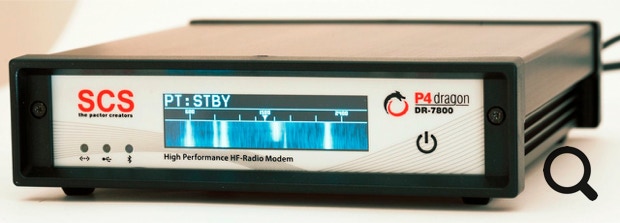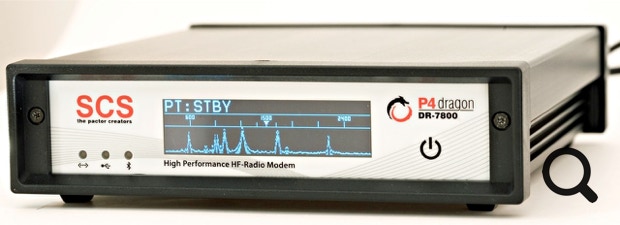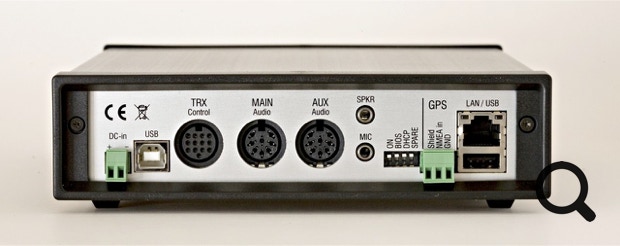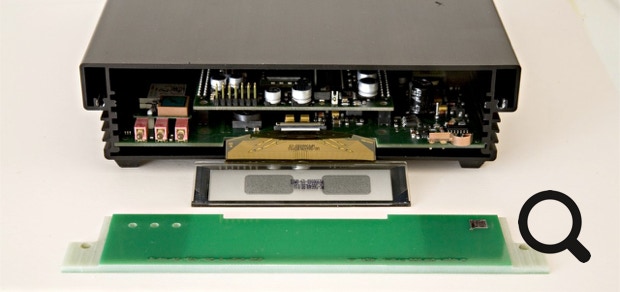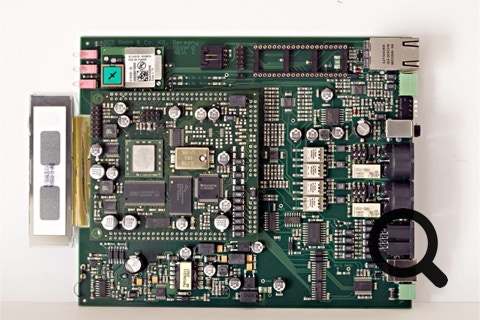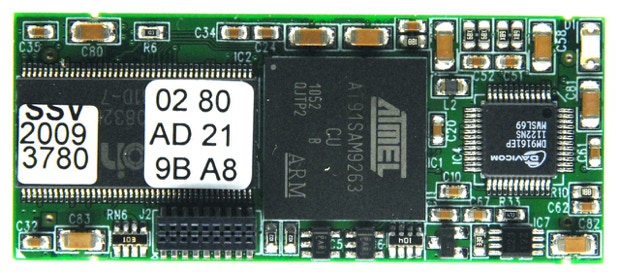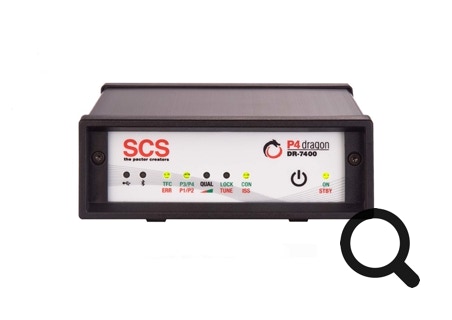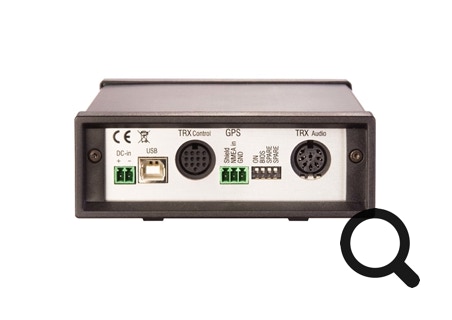


P4dragon DR-7800
Our HF modem P4dragon DR-7800 is the uncompromising advancement of the legendary PTC-II which is designed for professional deployment and for the ambitious amateur radio operator. DR-7800 is software-compatible with PTC-II which means that one may continue to use the existing software, such as AirMail, RMS Express, Alpha, etc., for PACTOR as well. Due to the pin compatibility of the radio equipment ports a change-over from the well-tried PTC-II technology to the innovative P4dragon technology is made convenient: re-plug, switch on and enjoy the higher speed and robustness with the PACTOR connectivity!
The elegant design and the excellently readable and informative OLED display including the simple upgrade facility (updates free of charge!) round off the concept of the absolutely latest shortwave modem from the house of SCS.
DR-7800 can be ideally used for HF email, for example, over the Winlink network. Externally, it stands out due to its high-resolution OLED display which, among other things, can be configured for waterfall and spectral views. Thanks to its reliability and low power consumption of 3 W, the new modem is also well-suited for distress radio communications and other applications under severe conditions.
DR-7800, Technical Data:
| Operation modes: | PACTOR-4, PACTOR-3, PACTOR-2, PACTOR-1, 2G ALE - MIL-STD-188-141 (optional), Packet Radio, Robust Packet (RPR), APRS, Weather-FAX (receive), Navtex (receive), RTTY (receive), GPS decoder |
|---|---|
| Processor: | Quad core DSP by Freescale |
| Computing power: | 6400 MIPS |
| Permanent storage: | Flash-ROM (Update via the user interface), EEPROM for parameters |
| Operating system: | Real-time multitasking operating system |
| Connectivity: | User interfaces: USB, Bluetooth (optional), Ethernet (optional), GPS: GPS input (RS232 and TTL) Transceiver audio: 2x transceiver ports (”Main” and ”Aux”, switchable, optional for dual-port operation), symmetrical or unsymmetrical operation can be choosen, with unsymmetrical operation PTC-II compatible connections), Input impedance: 15 kOhm Output impedance: 300 Ohm Output level (open output): 9 Vp-p max., free adjustable Input level: max. 5.5 Vp-p Transceiver control: Over an internal multi-level interface (V24, TTL), compatible with Kenwood, Icom and Yaesu transceivers and many other models Audio: Mic input (high impedance) Speaker output (low impedance, 2 W) |
| Display: | 64 x 256 pixel, OLED, blue, high contrast, excellent readability, with no viewing angle problems, brightness adjustable in 16 steps, display of waterfall and spectral views and much more, display modes can be adjusted |
| Time base: | Temperature stabilized (TCXO, 1 ppm) |
| Control elements: | Sensor key for ON/OFF and menu control via the OLED display, rear-side 4x DIP switch for basic configuration |
| Power consumption: | 400 mA (max. with 10 V input voltage) |
| Power input: | max. approx 3 W at 13.8 V |
| Supply voltage: | 10.. 28 V |
| Weight: | 770 g |
| Dimensions: | 172 x 43 x 205 mm (width x height x depth) |
P4dragon DR-7400
The compact HF modem P4dragonDR-7400 offers a lower-priced entry to the P4dragon modem class. The DR-7400 has been optimzed for use with the high-end data transmission mode PACTOR-4. This allows unparalleled fast and robust data links via shortwave. Email almost like at home - from any point on earth. The DR-7400 ist software compatible to the PTC-II series and to the DR-7800 so that existing PACTOR software (Airmail, RMS Express, Alpha etc) can continued to be used. The elegant design as well as the easy upgrade possibilities (free updates!) complete the concept of the “Little Dragon“. Of course, the DR-7400 also provides TRX remote control, a GPS input and an (optional) Bluetooth interface.
DR-7400, Technical Data:
| Operation modes: | PACTOR-4, PACTOR-3, PACTOR-2, PACTOR-1, 2G ALE - MIL-STD-188-141 (optional), Packet Radio, Robust Packet (RPR), APRS, Weather-FAX (receive), Navtex (receive), RTTY (receive), GPS decoder |
|---|---|
| Processor: | Quad core DSP by Freescale |
| Computing power: | 6400 MIPS |
| Permanent storage: | Flash-ROM (Update via the user interface), EEPROM for parameters |
| Operating system: | Real-time multitasking operating system |
| Connectivity: | User interfaces: USB, Bluetooth (optional) GPS: GPS input (RS232 and TTL) Transceiver audio: Input impedance: 47 kOhm Output impedance: 1 kOhm Output level (open output): 3 Vp-p max., free adjustable Input level: max. 3 Vp-p Transceiver control: Over an internal multi-level interface (V24, TTL), compatible with Kenwood, Icom and Yaesu transceivers and many other models |
| Display: | 8 dual-color LED's (green, red) indicating all important operating states and signal tuning |
| Time base: | Temperature stabilized (TCXO, 1 ppm) |
| Control elements: | Sensor key for ON/OFF, rear-side 4x DIP switch for basic configuration |
| Power consumption: | 400 mA (max. with 10 V input voltage) |
| Power input: | max. approx 3 W at 13.8 V |
| Supply voltage: | 10.. 27 V |
| Weight: | 450 g |
| Dimensions: | 125 x 43 x 138 mm (width x height x depth) |
Special Features:
P4dragon modems use a very complex newly developed synchronization algorithm for the link initialization (both ”normal” and ”robust”). This allows that on receipt of a ”connect” request from a calling station, an immediate and loss free automatic frequency compensation of up to ±280 Hz! can be applied to the receiver. The receiver of the ”Connect request” e.g. the Winlink-RMS or similar base station corrects its own receiver frequency AND the transmit frequency of the short radiated acknowledgement directly after the FSK synchronization. The modem of the calling station must then only correct the small remaining error (max ±10 Hz) after the link initialization. Thus PACTOR-2 /-3/-4 connects start immediately with full speed, independent of the initial frequency error. Base stations which operate using DR-7X00 modems thus also allow users initiating a link with a frequency error of greater than 30 Hz immediate full speed operation, even when the user only uses a PTC-II. (PTC-II modems in contrast only have a capture range of ±100 Hz for the reception of a link request, and automatically reduce the PACTOR-3 throughput when frequency errors of greater than ±30 Hz are measured.)
A high Tolerance to frequency errors is especially useful on the ”higher” shortwave bands. A relatively ”normal” frequency error of only 10 ppm produces a frequency error on the 20 meter band for example of 140 Hz.

SCS
Spezielle Communications Systeme GmbH & Co. KG
Roentgenstr. 36
D-63454 Hanau, GERMANY




